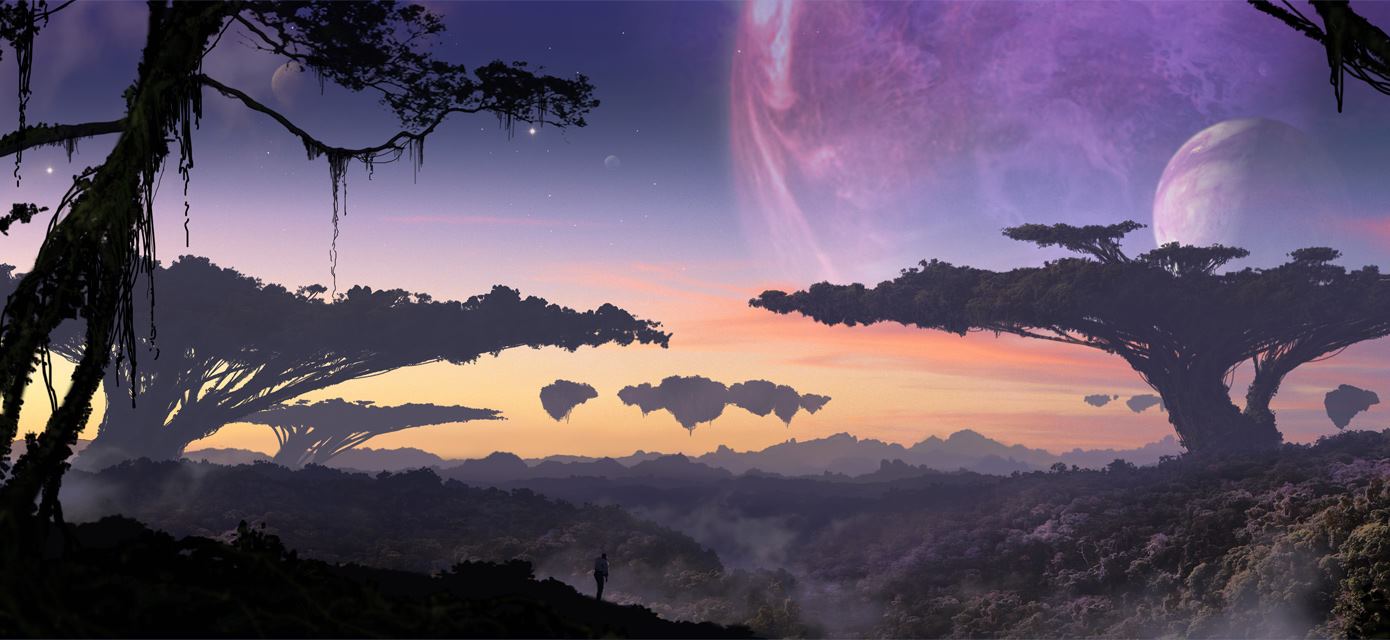
| Main | Neocene |

All pictures are taken from open sources and belong to their authors
Reports of the discovery of another planet in the Galaxy constantly
mention potentially habitable “super-earths” – silicate planets with a mass
of 2-8 terrestrial ones. Mini-earths with a mass of 10-30% of the Earth’s one
should also not be rare. They’re just harder to find. But can oceans of water
splash on small bodies?
The example of Mars shows that they can – but not for long. The light planets
are losing atmosphere too fast. On the other hand, the example of Titan seems
to indicate the opposite. This moon of Saturn, whose gravity is five times less
than Earth’s one, retains a dense atmosphere of nitrogen for more than four
billion years.
Titan is an interesting place. However, there are nuances. Of course, it loses
the atmosphere, although relatively slowly due to its very low temperature.
The velocity of the molecules is small and rarely turns out to be higher than
the second cosmic one, even for this body. Another matter is that forming away
from the Sun, Titan received so much water and gases that the supply has not
yet been used up.
The trick is that a planet formed where it is warm enough for water to remain
liquid will not receive water from the protoplanetary nebula, and the same is
true for ammonia, as a result of decomposition of which nitrogen appeared on
Titan. The earth-like body creates its atmosphere and hydrosphere by itself,
by the activity of its bowels. Mars lost its atmosphere and seas not because
it was small, but because it cooled down. Although, this was a consequence of
the first circumstance. Easy planets lose heat rapidly.
Thus, a viable “mini-earth” can exist, but only under the condition of constant
and extremely powerful feeding of its seismic activity by tidal influences.
It is possible in the case of a binary planet with a moon of comparable mass,
or in the case of the “blue moon”. The blue moon is not a rare event here. It’s
a name of a habitable moon of a giant planet – like Pandora from the “Avatar”
movie. At the moment, no such bodies have been found, but the theory does not
exclude their appearance.
By the way, the description of Pandora combines both fantastic and authentic
details. A habitable mini-earth, being habitable only as a result of furious
volcanism, will have a relatively small area of oceans, a warm climate and an
atmosphere poisoned by mantle gases – by carbon dioxide and hydrogen sulfide.
However, it was so on the Earth. Despite this, the atmosphere on such a body
may well be oxygen-rich, suitable for higher lifeforms.
But the most interesting thing is exactly how low gravity can affect the life
forms inhabiting the planet.
The idea persists in immature minds that the gigantism of herbivores in the
Jurassic and Cretaceous periods can be explained by the supposedly lower gravity
on the Earth in the corresponding epoch. Of course, even compared to the flat
Earth hypothesis, the hypothesis of increasing gravity sounds somewhat crazy,
but it’s not the point. The point is that in a world with low gravity, animals
will not be larger. After all, if dimensions were limited by weight, sea creatures
whose weight is reset to zero by the buoyancy would be infinitely large. It
can also be noted that modern conditions on the planet do not prevent the existence
of terrestrial arthropods weighing up to 4 kilograms (coconut crab). However,
arthropods are in no hurry to use this opportunity.
In fact, the sizes of animals are dictated by extremely complex and diverse
considerations of expediency. Weight restrictions, theoretically, can put a
limit to attempts of a certain species to go too far along the path of gigantism.
But in practice, they have never played a role. Even in the case of 100-ton
sauropods, the upper limit was not reached. In the case of pterosaurs, it was
bypassed and surpassed many times over. In addition to weight, there are still
too many reasons to become or not become too large.
On the other hand, gravity has a very significant impact on the choice of the
mode of movement by animals. Half the weight will make the wing flapping flight
accessible to medium-sized animals – up to 50-70 kilograms. In such a situation,
only even larger or burrowing animals will not rush to acquire wings. And among
the big animals, jumping on two legs will be more popular than running on all
four.
If we assume that the density of the atmosphere will be close to the Earth’s
one (because high density changes the rules of the game radically), the “light
planet” will turn out to be the world of birds. Or of creatures that have become
similar to birds as a result of convergent evolution – because similar problems
imply similar solutions also. The solutions found by birds are better than those
embodied by insects, pterosaurs and bats. Having got the opportunity to eliminate
the lag behind land beasts in brain size and physical strength, birds will be
able to take a position at the top of the food pyramid.
Translated by Pavel Volkov, 2021
The original Russian article is here
| Main | Neocene |